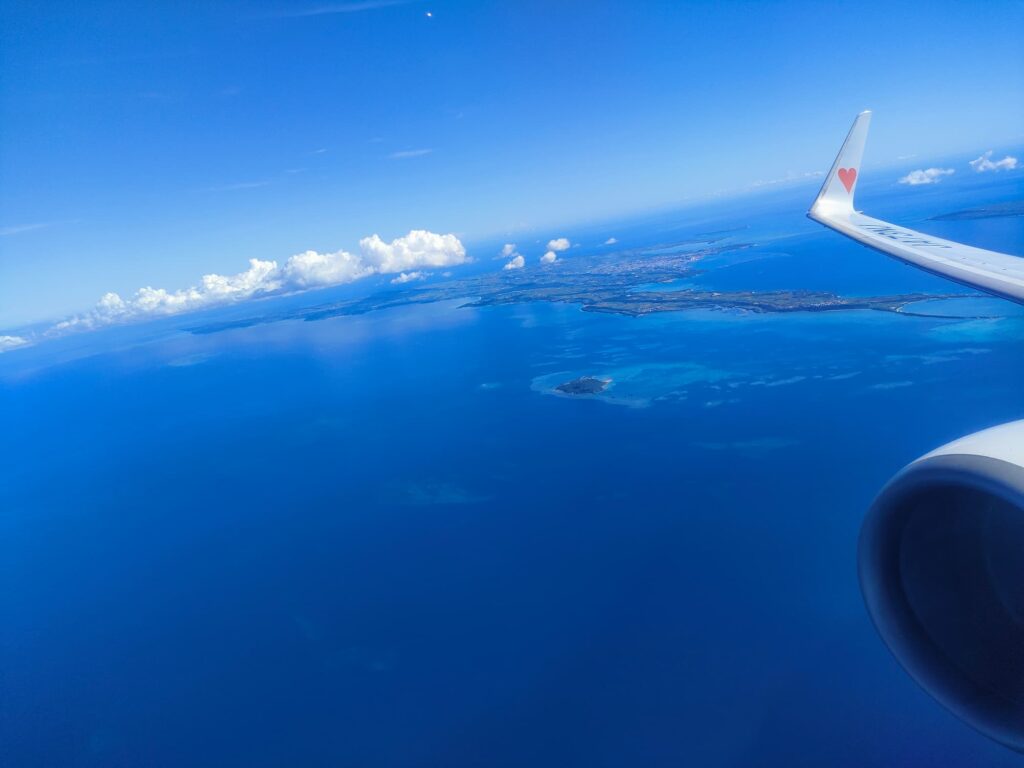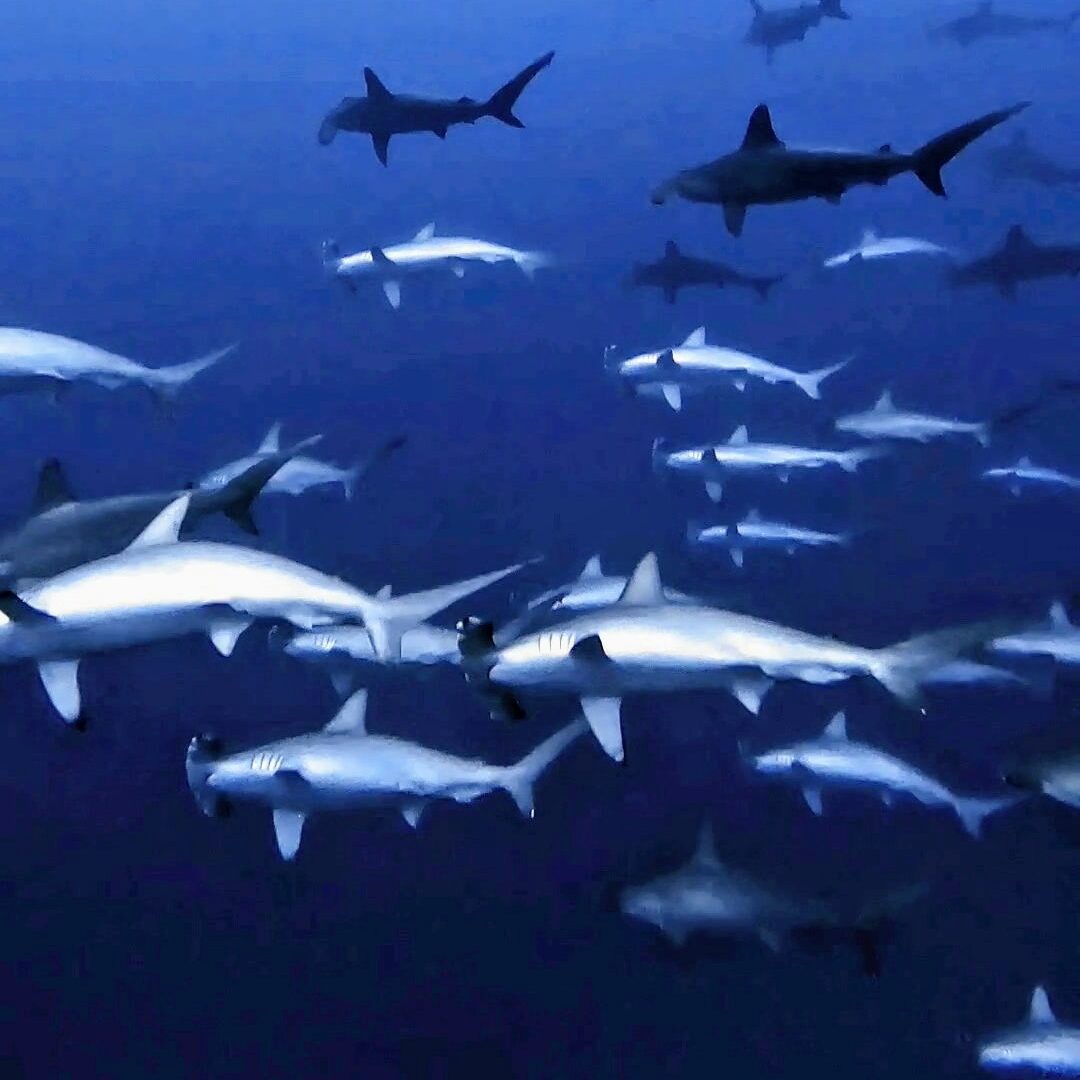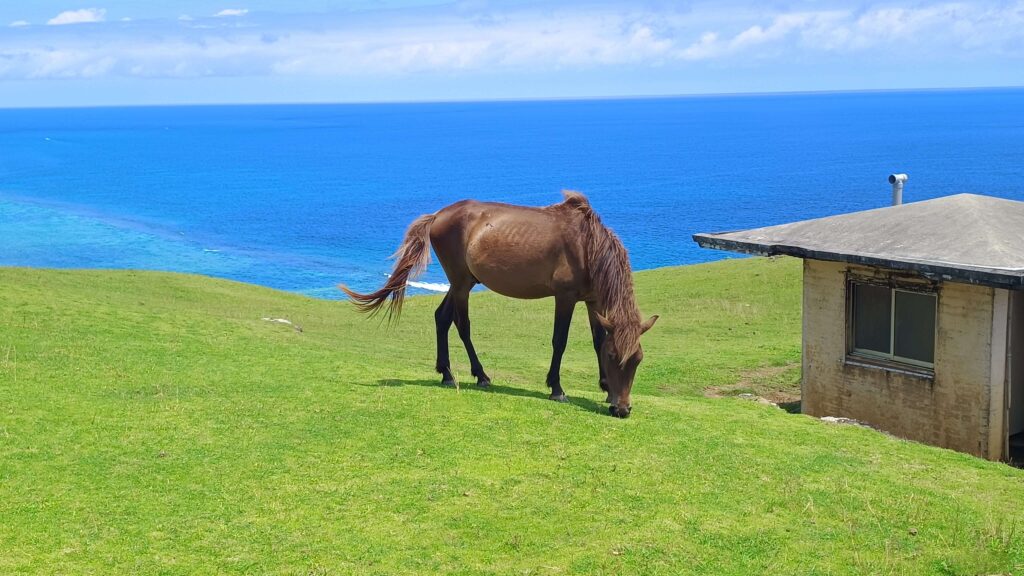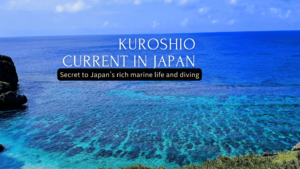If you’re a scuba diver fascinated by Hammerhead Sharks, Japan’s Yonaguni Island is a must-visit destination. Renowned for its breathtaking underwater monument and frequent sightings of schooling Hammerhead Sharks, Yonaguni has become a hotspot for divers from both Japan and abroad.
Find out essential information for shark diving in Yonaguni and the insights by the local guide about the island and what to expect.
Content
- 1 Hammerhead paradise: Where is Yonaguni Island?
- 2 Best way to go to Yonaguni for Hammerhead Shark diving
- 3 Biggest mistake 1st time divers make in Yonaguni
- 4 Are Hammerhead Sharks safe to dive with?
- 5 Why Yonaguni Island has high Hammerheads encounter rate
- 6 Best season to dive with Hammerhead Sharks in Yonaguni
- 7 Maximizing Hammerhead Shark encounter rate in Yonaguni
- 8 Dive Spots for large schools of Hammerhead Sharks
- 9 Underwater Etiquette and Safety Tips for Hammerhead Shark Dives
- 10 Be Prepared, but be spontaneous
Hammerhead paradise: Where is Yonaguni Island?
Yonaguni Island, located at Japan’s westernmost tip, lies 111 kilometers east of Taiwan, making it closer to Taiwan than to mainland Japan.
The island enjoys a subtropical climate, with water temperatures ranging from 22 to 30 degrees Celsius, ideal for year-round diving in a wetsuit. With this island so small, spanning 28.88 square kilometers, access from the port to various diving spots is conveniently quick, ranging from a 2-minute to a 30-minute boat ride.
Best way to go to Yonaguni for Hammerhead Shark diving
Let’s assume you’d arrive in Tokyo and enjoy some time in the city first. Then after typical sightseeing, you will be ready for the adventurous part of the trip. YONAGUNI.
The first place to go to is Haneda Airport and you will fly from there.

From Tokyo to Yonaguni
To get to Yonaguni from Tokyo, you have two options: transfer at either Okinawa (OKA) or Ishigaki (ISG).
Whether you’re flying from Naha or Ishigaki, reaching Yonaguni Island requires a connection with Japan Ryukyu Air Commuter (RAC). For travelers departing from Tokyo, the flight routes are limited to either Haneda-Naha-Yonaguni or Haneda-Ishigaki-Yonaguni.
From Okinawa to Yonaguni
Divers often opt for convenient itineraries, such as an evening flight from Haneda to Naha, an overnight stay, and a morning flight to Yonaguni, allowing for three exhilarating dives upon arrival. Keep an eye on flight options like RAC721 from Naha at 07:15 to Yonaguni at 08:35.
Recommended flights from Tokyo to Okinawa
From Tokyo, you have several airline options. JAL, ANA, Skymark and Solaseed.
All of them depart from Haneda Airport, which is conveniently located and well connected from the center of Tokyo and Yokohama. You can take a train from any Tokyu line station to Haneda or take Tokyo monorail from Hamamatsu station.
https://tokyo-haneda.com/en/access/train/index.html
There is another airline that is Peach, but them being the Low Cost Airline, leave from the outskirt of Chiba, and not from Tokyo. It is similar to taking Ryanair from Frankfurt Haan, Paris Bevais, London Stansted and the like. I am not sure if it make sense to save 20 USD to spend extra time for surface travel.
From Ishigaki to Yonaguni
For divers flying from Ishigaki, the RAC741 flight departing at 10:05 and arriving in Yonaguni at 10:40 offers a chance for two dives on the same day.
Alternative, Ferry ride from Ishigaki to Yonaguni
If you’re up for a longer stretched journey, consider the “Gero-sen” ferry operated by Fukuyama Kaiun, departing twice a week from Ishigaki. While diving on the arrival day might be challenging, this option suits those who prefer a leisurely approach to their scuba schedule. Despite its nickname, the “vomit ship,” the ferry provides a comfortable 4-hour journey with bunk beds for a surprisingly enjoyable experience.
Biggest mistake 1st time divers make in Yonaguni
The biggest and the most common mistake that the 1st time visitors to Yonaguni make is not securing the accomodation first.
Accommodations in Yonaguni: Plan Ahead
Accommodations on Yonaguni Island are limited, especially during the peak Hammerhead Shark season from December to March. With the island attracting a considerable number of divers during weekends and holidays, securing a place to stay becomes crucial.
For those determined to encounter Hammerhead Sharks, it’s advisable to secure accommodation before diving reservations.
Are Hammerhead Sharks safe to dive with?
Known as “Shumokuzame” in Japanese, the Hammerhead Shark is a globally distributed species, often spotted around Japan’s Mikomoto Island and Yonaguni Island.
Recognized by their distinctive hammer-shaped heads, these sharks boast sharp teeth and are known for preying on fish.
Fear not, as Hammerhead Sharks are not known to pose a threat to humans. Their timid nature means they usually avoid aggressive behavior towards divers and swiftly swim away when approached. Understanding the proper approach is key to enhancing the diving experience.
Why Yonaguni Island has high Hammerheads encounter rate
Hammerhead Sharks in Japan are commonly found in areas influenced by the Kuroshio Current.
Yonaguni Island, situated along the Kuroshio Current’s path, offers a promising environment for encountering these majestic creatures. It’s noted that a more indirect impact of the Kuroshio Current on the island seems to be more favorable for larger Hammerhead Shark encounters.
Best season to dive with Hammerhead Sharks in Yonaguni

Yonaguni Island is synonymous with large-sized Hammerhead Sharks, with bodies ranging from 2 to 3 meters, surpassing those in Mikomoto. While the hammerhead season in Mikomoto is during the summer, the best season for encountering schooling hammerhead sharks in Yonaguni is winter.
December to March
The optimal timing varies each year, but generally, the hammerhead season is in full bloom from the end of December to late March. During this period, water temperatures of approximately 22 to 25 degrees Celsius are considered ideal, providing a higher likelihood of Hammerhead Shark sightings.
While November and April/May also offer possibilities, water temperatures play a significant role. Surpassing 26 degrees Celsius dramatically decreases the likelihood of encountering Yonaguni hammerheads.
Maximizing Hammerhead Shark encounter rate in Yonaguni
Despite your best efforts, there’s always a chance of not encountering Hammerhead Sharks during your visit to Yonaguni Island.
Stay longer
To maximize your chances, consider multiple trips within the season or extending your stay for a couple of days.
The weather can be unpredictable other than the regular encounter rate. Strong north winds could limit the area for diving, lowering encounter rate. The bad visibility can easily lower encounter rate. Staying longer definitely increases the chances of better ocean, therefore better encounter rate with hammerhead sharks.
You can always combine your Yonaguni dive travel with Ishigaki dive for Manta. Depending on your satisfaction level in a few days with hammerhead sharks diving, you can go to Ishigaki manta dives or stay longer in Yonaguni for more sharks.
Drift Dive often before coming to Yonaguni
Diving skills and experience also play a crucial role in making the most of your Hammerhead Shark encounters.
Visit Yonaguni multiple times in one season
The nature is uncontrollable. You might land Yonaguni when diving shops are struggling to find sharks. It might not be helpful to stay longer in that situation. But coming back more often to Yonaguni definitely guarantees you to bump into Shark paradise days as well.
Dive Spots for large schools of Hammerhead Sharks
Yonaguni Island offers several dive points where Hammerhead Shark schools are known to appear. Explore iconic locations such as Irizaki, a classic point surrounded by the south side of Yonaguni Island. This area includes points like “Minami No Ne,” “Hammerhead Rock,” and “Hammer Way,” known for attracting not only Hammerhead Sharks but also other large marine creatures.
Underwater Etiquette and Safety Tips for Hammerhead Shark Dives
Drift Diving skills
All scuba diving made in Yonaguni are drift dive. Recommended diving experience is minimum 100 dives and you’d better be diving frequently, at least every couple of months.
Approaching Sharks with Grace
The Hammerhead Shark season often sees larger groups of divers, requiring a thoughtful approach to ensure smooth interactions both underwater and on the boat. (it sometimes looks like a military training.)
Also, larger groups mean divers need to take turns to take pictures and videos of hammerhead sharks, making sure everyone gets to take a close look at sharks and keeping the school of sharks tight together, and not causing to split the school of sharks.
Do not drift away your camera!
Additionally, take extra care with valuable cameras and GoPros to prevent any unfortunate mishaps. Some people drop it while diving and some people drop it while climbing the ladder to the boat.
Be Prepared, but be spontaneous

You can only do so much to prepare well to increase your chance of diving with hammerhead sharks in Yonaguni. The best and only must do after all the dive trip planning is to enjoy.
Enjoy your stay in Yonaguni and try to be open to every encounter both underwater and overground to immerse yourself in this one and only marvelous island of Japan.


